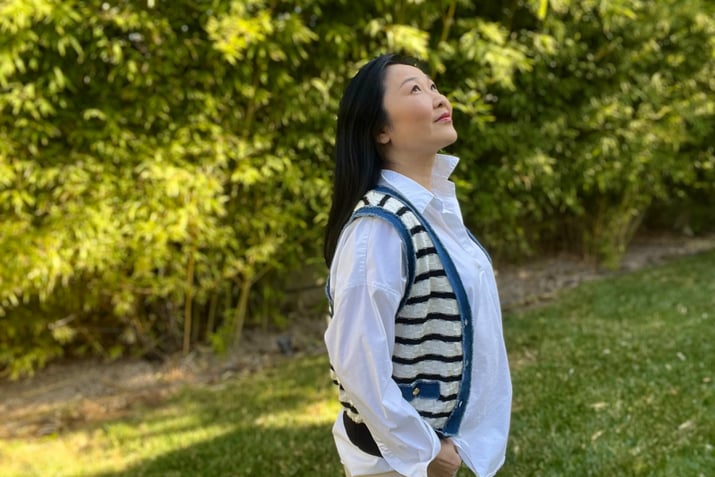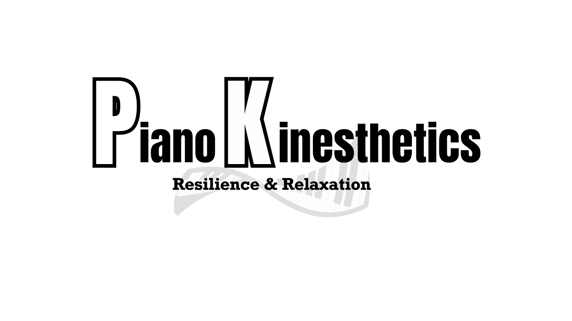

A Journey Through Kinesthetic and Sensorial Learning with the Feldenkrais Method
Exploring the Harmonious Integration of
Music and Movement
Janice ChenJu Chiang, an accomplished pianist, has not only dedicated her life to the pursuit of musical excellence, but also to the exploration of kinesthetic and sensorial learning. Her unique approach to piano pedagogy has helped numerous students achieve a deeper connection with their instruments and their own bodies. Central to her teaching philosophy is the Feldenkrais Method, a form of somatic education that emphasizes awareness through movement. As a Feldenkrais practitioner, Chiang integrates these principles into her music instruction, creating a holistic learning experience for her students.
Teaching Philosophy
Chiang's teaching philosophy is deeply rooted in the belief that music education extends beyond the auditory experience to encompass the entire body. Her integration of the Feldenkrais Method within her piano pedagogy underscores the importance of kinesthetic and sensorial experiences. By encouraging her students to tune into their bodies, she helps them cultivate an intimate awareness of how their physical movements influence sound production and musical expression.
Anatomy plays a significant role in Chiang's approach, as she believes that a thorough understanding of the body's structures and functions can enhance a musician's technical proficiency. Through anatomical studies, students learn about the mechanics of their own bodies, gaining insights into how muscles, joints, and bones work together during piano execution. This knowledge empowers them to develop techniques that are both effective and sustainable, reducing the risk of injury while enhancing their musical performance.
Ergonomics is another cornerstone of Chiang's teaching. She emphasizes the importance of adopting proper postures and movements to ensure that playing the piano remains a pleasurable and pain-free activity. Her lessons often include guidance on how to sit with correct alignment, how to use the whole body during play to distribute effort evenly, and how to maintain balance and ease at the keyboard.
Sensorial experiences are integral to Chiang's methodology. She incorporates a variety of exercises designed to heighten her students' sensory awareness, such as rhythmic clapping, dance, and movements from Feldenkrais lessons that mimic the act of playing the piano. These exercises help students internalize the rhythms and nuances of the music, allowing them to express themselves more naturally and fluidly.
By weaving together these elements—ergonomics, kinesthetics, sensorial experiences, and anatomical understanding—Janice ChenJu Chiang creates a comprehensive and holistic learning environment. Her students not only develop technical skill but also gain a profound connection to their instruments, transforming their musical journey into an exploration of sound, senses, and movement.
Becoming a Feldenkrais Practitioner
Janice's journey to becoming a Feldenkrais practitioner began with her own experiences of tension and discomfort while playing the piano. She sought out the Feldenkrais Method as a way to address these issues and was so impressed with the results that she decided to train as a practitioner herself.
The training process was rigorous and involved extensive study of anatomy, physiology, and movement. Janice also had to complete numerous ATM and FI lessons, both as a student and as a teacher. Through this process, she gained a deep understanding of the Feldenkrais Method and how it could be applied to her work as a piano teacher.
Recognizing the need to reach a wider audience and provide accessible solutions to common pianistic challenges, Janice ChenJu Chiang has developed an innovative online tutorial, Piano Kinesthetics. This digital resource incorporates the habitual movements associated with pianists and is designed to benefit those seeking to improve their playing technique and physical well-being. The tutorial offers comprehensive guidance on how to integrate kinesthetic awareness into daily practice, helping pianists to move effortlessly, avoid injury, and achieve a more expressive performance. Through this platform, Janice extends her holistic teaching approach beyond the traditional classroom, making her expertise and unique methodology available to pianists around the world.
Integrating Feldenkrais into Piano Teaching
Integrating the Feldenkrais Method into her piano teaching has allowed Janice to offer her students a unique and holistic approach to learning music. She uses Feldenkrais lessons to help students become more aware of their movements and to develop more efficient and comfortable ways of playing.
One of the key aspects of this integration is the focus on awareness and mindfulness. Janice encourages her students to pay close attention to their bodies and their movements as they play, and to notice any tension or discomfort. She then uses Feldenkrais techniques to help them explore new ways of moving that can alleviate these issues.
For example, if a student is experiencing tension in their shoulders while playing, Janice might guide them through a Feldenkrais lesson that explores different ways of moving the shoulders and arms. This could involve gentle movements, such as lifting and lowering the shoulders, or more complex sequences that integrate the whole body, including chest, pelvis, and the lower extremity.
By increasing their awareness and expanding their movement repertoire, students can learn to play with greater ease and efficiency. This not only reduces the risk of injury but also allows them to express themselves more freely and authentically through their music.
Janice ChenJu Chiang's focus on musicians' wellness has reshaped her piano teaching. By integrating wellness into her lessons, she provides a holistic learning experience. This approach equips students with the skills and mindset to pursue their musical paths with curiosity and resilience.
